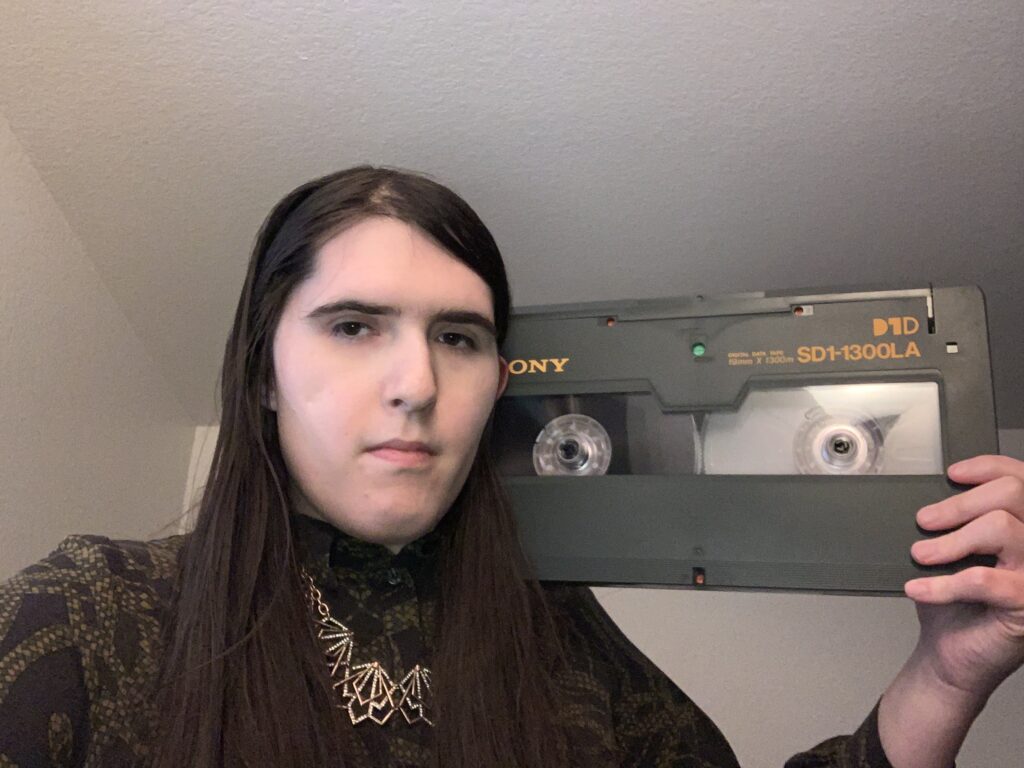I collect vintage computers and phone systems. Why? They frequently require repair, obscure knowledge, or dwindling parts supplies. Let me tell you how and why.
Dialling the past
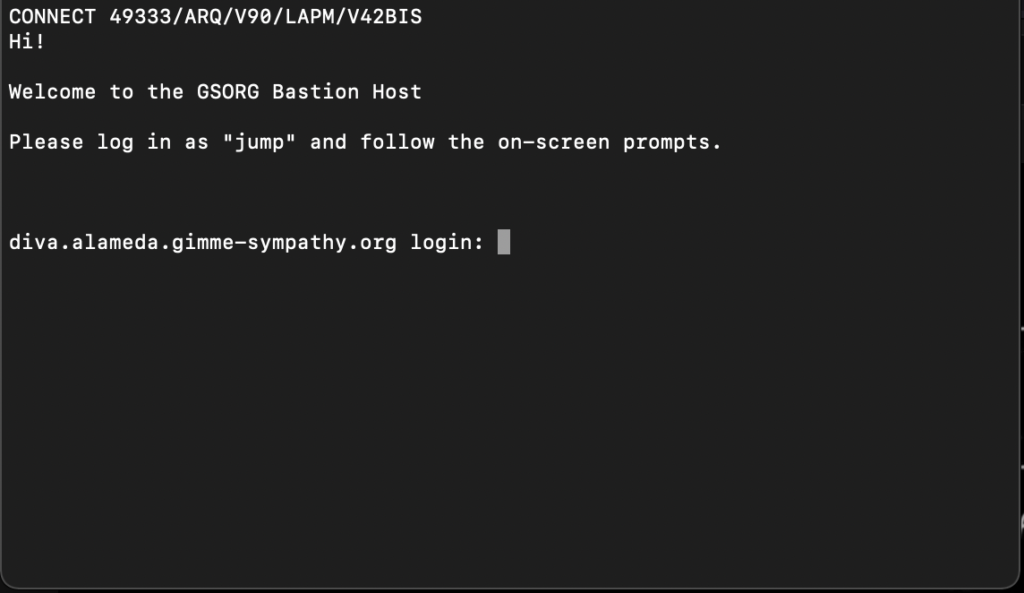
Here’s me dialling in to my dial-in server using an external serial modem.
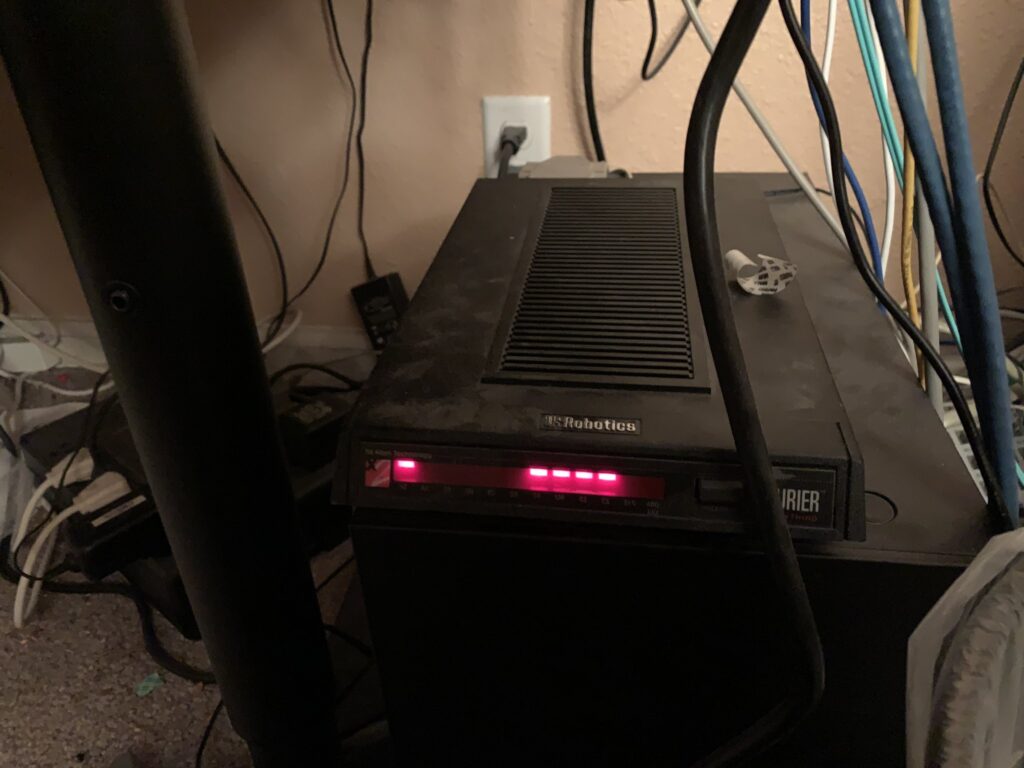
The remote dial-in server is this sketchy machine which lives in the garage:

The big card? That’s not a graphics card. That’s a DIVA card. A T1 card for a 24-channel digital telephone link. The modem dials through the Nortel Meridian (pictured below) and it answers the call, acting like a remote modem. A Linux login prompt is presented and a script of mine is executed upon logging in as jump.
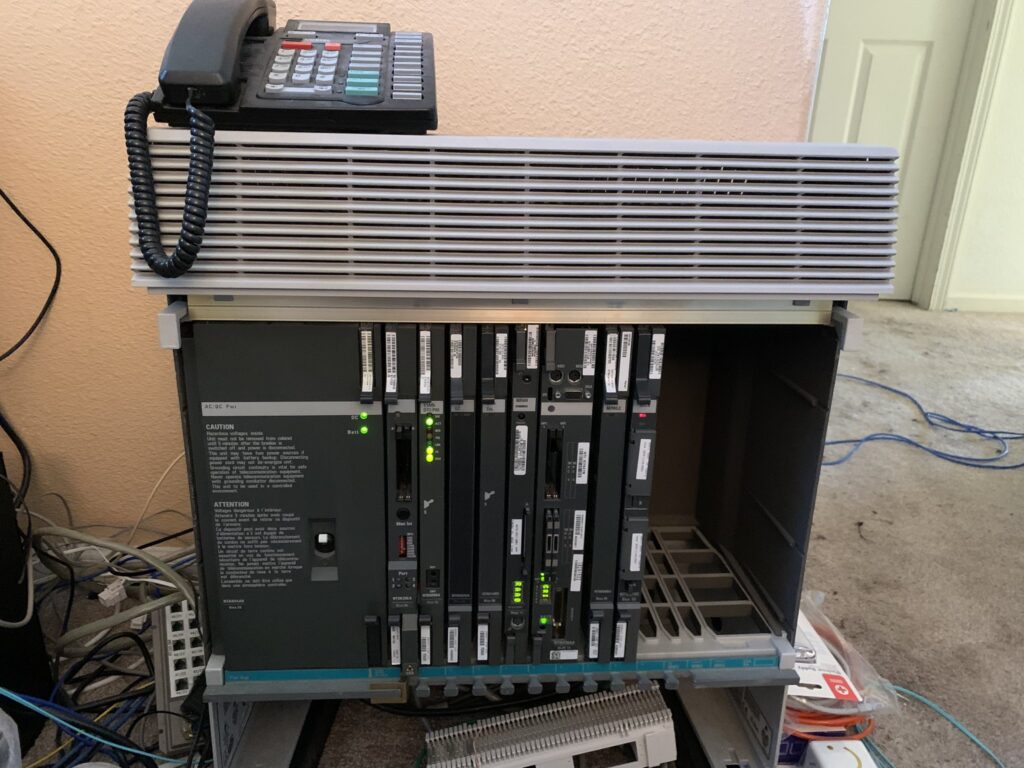
This is just one of my many phone systems.
The TelecomZone
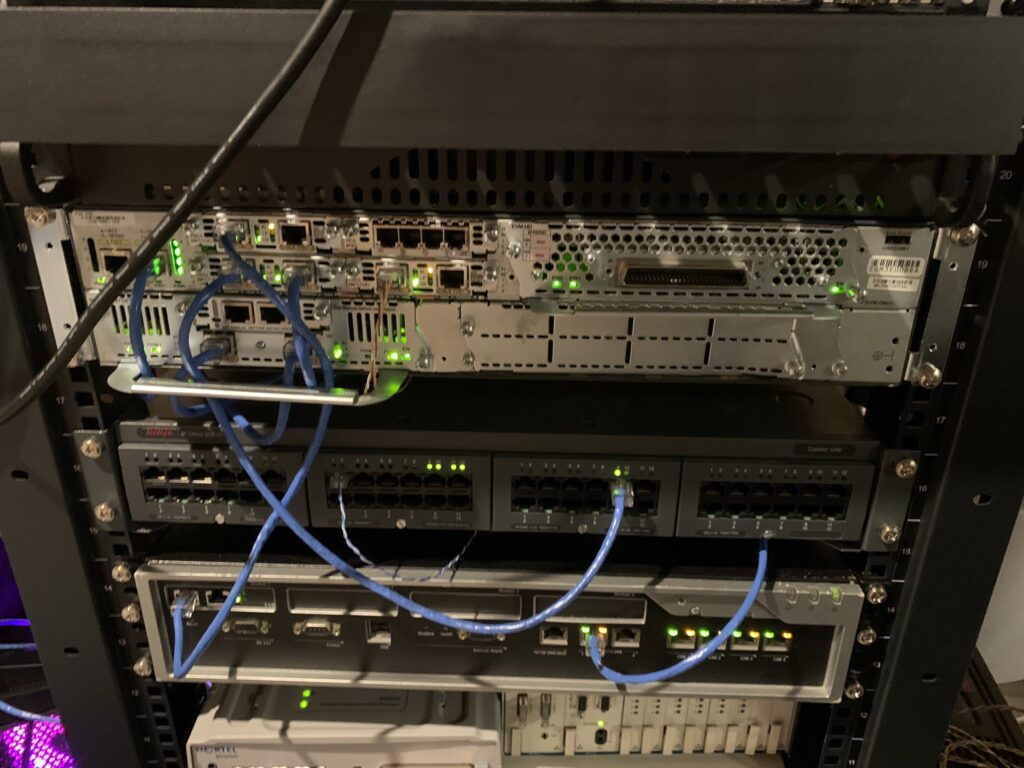

What Does That Mean?
A Cisco 2851 ISR is a nominally-IP router that also allows me to connect 10 T1-based devices to it with its current module configuration. All my phone systems connect back to it via T1s or in the case of the BCM50, a SIP trunk. My POTS (analogue telephone) line connects to the TA750 channel bank.
My channel bank takes a digital T1 line from the Cisco 2851 and breaks it out in to 24 analogue lines. In its current configuration 4 are FXO (acting like a telephone-side of the line) and the other 20 are FXS (acting like the switch end of a phone line). My incoming line connects to the FXO port and the outgoing-message-only answering machine is connected to an FXS port.
The YATE box connects to the Cisco via a T1 line and allows interconnection to the wider phone network through a SIP trunking provider. This is how I make cheap international calls, with varying degrees of success or call quality. I am also connected to a private international phone network mesh through this machine.
The BCM50 is a small phone system designed for smaller offices, but that doesn’t mean it’s not powerful! It features voicemail, analogue trunks, analogue lines, IP phones, IP trunks, paging, etc. It connects back to the Cisco 2851 via a SIP trunk. I have an IP phone connected to it sitting on my desk.
The IP Office is a sort-of successor for the BCM50 and it connects back to the Cisco via a T1 line. I have a digital phone for it upstairs on my desk. The voicemail system for it runs as a VM on one of my servers in the left rack.
The Mitel 3300 ICP is a standard office/hotel phone system (they show up frequently in hotels, for some reason) that connects back to the Cisco via T1 as well. It currently only support IP telephones.
The Meridian upstairs is connected to the Cisco via a T1 line, as well as to the TA750 channel bank FXS port via analogue line.
The Lucent 16A is a central-office recorded announcement machine, frequently paired with a 5ESS telephone switch. Mine connects to the CIsco 2851 via T1 line instead, and can be dialled from any phone system in the house.
Here’s my desk:
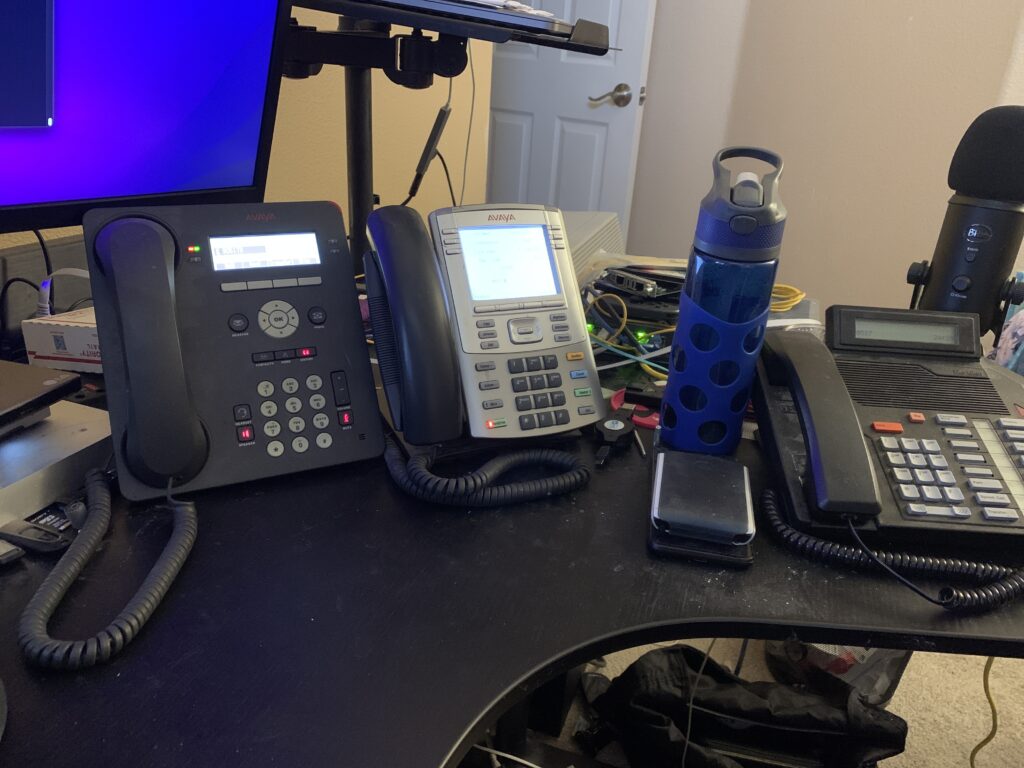
Some systems are in storage including 2 NEC phone systems, a Toshiba system, and this Mitel SX-200.
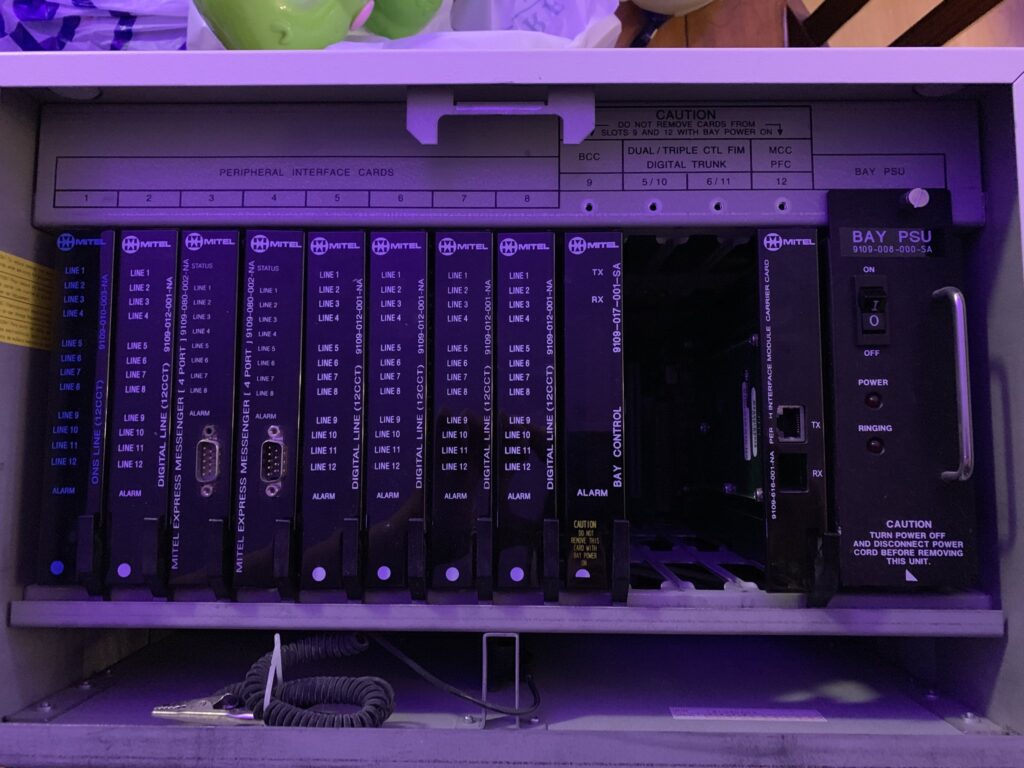
Vintage Computing
I’ve been collecting vintage computers for years, Here’s what the basement in my parents’ house looked like back in 2014 about a year before I moved to the Bay Area.

Everything from a POWER5 machine to Itanium and Alpha. Upstairs and not pictured are 2 PDP-11s, several VAXen, an SGI Octane, and several SPARC machines.
Here’s a DEC LA120 DECWriter III stored upstairs.
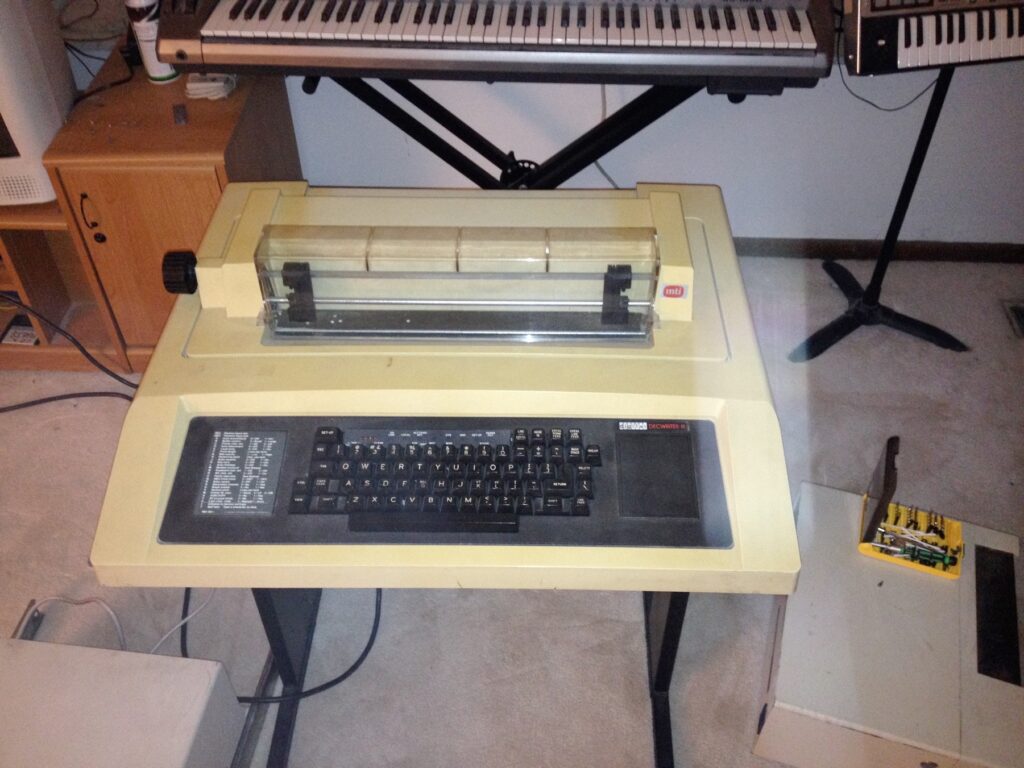
A particularly fascinating and rare machine I own is a CompuServe SC-40 PDP-10 clone (pictured in the foreground)

At one point, my quest was to obtain an example of every major computer architecture. I ended up with VAX (at least 7 examples), PDP-11 (about 3 examples), MIPS, Itanium, POWER/PPC, Alpha, 68k, 6502, etc. I’ve collected a lot over the past 7 years. Gifts from friends, purchases, lucky ebay finds, etc. I’ve collected a lot.
How’d I Get in to Vintage Computing?
Aside from the from-a-young-age love of Windows 95 and NT 4 and some fascination with the old computer systems referenced in the BOFH stories, it all started with a one-line comment I read on the Fallout game series wiki. The article mentioned the terminal output on the in-game terminals et al seemed vaguely reminiscent of OpenVMS. I fell in love with less-prevalent operating systems and computers shortly after. I’d discover the SIMH emulator package, the HECnet worldwide DECnet network, Bitsavers, etc. I’d meet friends who would give me software help, hardware, point me towards resources, etc. It was a whole new wonderful world, one I am still involved in to this day.
I’ve tried to run most every OS I could get my hands on, from minicomputers to mainframes. I wanted to know bits about them all!
I’d eventually start many fascinating projects – including a public-access 4.3BSD machine running in a VM in the cloud called oldbsd(dot)club. That project taught me to think outside the box when solving modern problems, even. I could see how all the pieces of the OS fit together with the smaller footprint and different complexities compared to modern OSes.
Eventually i’d see a chance posting on a mailing list: A CompuServe SC-40 for sale. I contacted the member offering $150 and to pick it up that week, figuring I’d be outbid and had no hope of procuring the machine. The offer was accepted and I was soon in the possession of 2 SC-40s.
Another still-ongoing project of mine is to bootstrap pure 4.4BSD for HP 9000/300 computers. I recently procured a working machine for this purpose but it is an easier-said-than-done kind of project with lots of dependencies.
I’ve got an NT 4 and Windows 2000 network running at home for vintage computers and VMs to use. I also have a bit of Novell NetWare. Complete with network shares and roaming profiles. I can pretend to have a vintage office network.
How’d I Get in to Phones?
To start things off, my grandfather had worked for Western Electric for a good chunk of his life which got me fascinated by telephones and electronics. The phone network is entire complicated system to explore and learn about! I’d clearly never get to own a full central-office phone switch, but what if there was something else I could play with?
The San Francisco Bay Area used to have a fascinating recycler named WeirdStuff Warehouse. They sold so many fascinating electronics throughout their lifetime. I’d purchased everything from a Motorola 88000 PowerStack to a DEC VAX there. One day I stopped by after work and one of the managers was working that day. I asked if he could show me the back area again in case there was anything phone related for sale there. He obliged and 20 minutes later I walked out with a Lucent/Avaya Definity phone system and a few phones for about $200. This was the beginning of a journey down a fascinating rabbit hole that would lead to me growing a phone network in my apartment (featured in A Certain Kind of Love, my previous article)
Tying it All Together
Now I’ve got a phone network, and a computer network. What if I combined them? I could set up a dial-up server allowing me to connect to the internet on vintage hardware, or dial in to a VM of a vintage machine from a terminal. I could run a BBS, or set up a UUCP network over the internet using real modems to introduce “simulated” latency and bandwidth caps. It’s fun and teaches me to use outdated skills and technologies to either make me appreciate modern systems or to think differently on solving problems with them.
Combine the vintage OSes I run and the legacy phone network I run, I can pretend to be a mid-90s office in great detail…aside from décor.
Why?
For a couple of reasons. First off: it’s fun. Secondly: it teaches different big-picture thinking…especially when combining or architecting complicated systems.
The personal reason? It’s to simulate the past. A past I wasn’t even alive for. A big personal project of mine is to emulate the late 80s/early 90s…a time I wasn’t even alive for, having been born in 1994. I remember enough to know I personally was happier then when all my family was alive and healthy. When school hadn’t been a traumatic experience, when I wasn’t dealing with mental health problems.
A personal splinter project from my telephone or computer network is a personal in-home TV “network” with period shows, simulated TV guides (sigh, might finally need an Amiga), and maybe a BBS to chat about the shows on. I’m a good ways there! (Honestly it’d be one TV and like 2 computers so ‘network’ is an overstatement)
Closing comments
Ultimately? I’ve met some really good friends throughout my dabbling in vintage computing and telephony. More than half of my personal dream is achievable now through a collaboration with a roommate and several other friends.
The final question though: was it all worth it? Years and thousands of dollars later, developing several friendships later, the help of countless others later…
For once, I think the answer is: yes.
